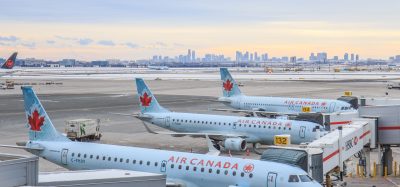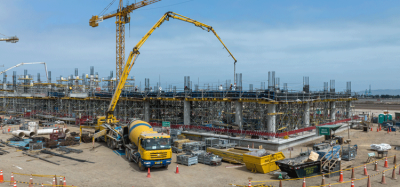Aerotropolis 2: The Global Scene
- Like
- Digg
- Del
- Tumblr
- VKontakte
- Buffer
- Love This
- Odnoklassniki
- Meneame
- Blogger
- Amazon
- Yahoo Mail
- Gmail
- AOL
- Newsvine
- HackerNews
- Evernote
- MySpace
- Mail.ru
- Viadeo
- Line
- Comments
- Yummly
- SMS
- Viber
- Telegram
- Subscribe
- Skype
- Facebook Messenger
- Kakao
- LiveJournal
- Yammer
- Edgar
- Fintel
- Mix
- Instapaper
- Copy Link
Posted: 22 March 2016 | Dr A N Sarkar | No comments yet
These transportation hubs are able to dramatically stimulate local economies by attracting a wide range of aviation-related businesses to their peripheries and resulting in what John Kasarda, a US academic who studies and advises governments on city planning issues, has dubbed the ‘aerotropolis’…
Last week we discussed how major international airports have developed over time into key nodes in global production and enterprise systems through speed, agility and connectivity. These transportation hubs are able to dramatically stimulate local economies by attracting a wide range of aviation-related businesses to their peripheries and resulting in what John Kasarda, a US academic who studies and advises governments on city planning issues, has dubbed the ‘aerotropolis’.
“The rapid expansion of airport-linked commercial facilities is making today’s air gateways anchors of 21st century metropolitan development where distant travellers and locals alike can conduct business, exchange knowledge, shop, eat, sleep, and be entertained without going more than 15 minutes from the airport. This functional and spatial evolution is transforming many city airports into airport cities.” – Dr. John Kasarda
Several airports around the globe have organically evolved into these airport-dependent communities, generating huge economic profits and creating thousands of jobs, but what Kasarda is arguing for is a more organised and purposeful approach to the development of these aerotropolises – what he believes to be the future model of a successful city. Kasarda claims that the cities that will thrive in the 21st century will be those with airports and their centres, for “efficient, large, well-connected airports matter to prosperity above everything else” and “the fastest, best-connected places will win”.
The development of aerotropolis around the megacities of the world is all together a recent conceptualisation to build smart cities with sharp focus of eco-innovation and green economy. In a modern aerotropolis, the infrastructure is so built that it connects the megacity with massive road, transport systems and IT networks (i.e. The Internet of Things) in one hand and provides key linkages and services for the international businesses in the other.
A number of aerotropolis clusters are emerging which not only include the airport city but also a region of adjacent business development around the airport core that is referred to as an airport edge-city.
Airport terminals are fast becoming luxurious shopping malls and artistic and recreational venues. No longer restricted to magazine shops, fast food outlets, and duty free, they now feature brand name boutiques, specialty retail, and upscale restaurants along with entertainment and cultural attractions.
Most major airports, of course, are diversifying, expanding, and upgrading their retail offerings, often incorporating shopping streets, gallerias, gourmet and culinary clusters, and arts, entertainment, and cultural zones. These are being complemented by local themed merchandise and dining outlets.
Aerotropolises are most prevalent in Europe, Asia and the Middle East. In fact, Dubai houses the world’s largest aerotropolis. Governments in these regions see the aerotropolis as a vehicle for promoting economic growth and trade within and to their countries. In many of these locations, large greenfield sites are available so that the aerotropolis can be built from scratch. However, the aerotropolis concept is also taking hold in the developed world, especially in U.S. cities such as Atlanta, Detroit, and Philadelphia. These cities are leveraging their airport areas with strategic, multi-use developments.
We take a look at some of the world’s aerotropolises:
- Upon completion, Dubai World Central will become the world’s largest airport with an ultimate capacity of more than 160 million passengers and 12 million tonnes of cargo per annum. Forming the heart of a greater project, DWC will be a 140km2 multiphase development of six clustered zones that include the Dubai Logistics City (DLC), Commercial City, Residential City, Aviation City and the Golf City.
- Chicago‘s O’Hare International Airport hosts the 2nd largest office market in the Mid-West.
- Washington Dulles’s airport area alone has more retail sales than any other American city besides Manhattan.
- Detroit, a city that is seriously considering a new airport development to stimulate its struggling economy, would generate $10 billion in annual economic activity, $171 million in annual tax revenue and would create and sustain 64,000 jobs after 25 years.
- Hong Kong International hosts more than 30 high-end designer clothing shops.
- Singapore Changi offers cinemas, saunas, and a tropical butterfly forest.
- Las Vegas McCarran has a museum.
- Amsterdam Schiphol has a Dutch Master’s art gallery.
- Frankfurt has the world’s largest airport clinic, serving over 36,000 patients yearly
- Detroit Metro has a swanky 420-room Westin Hotel located just off its main terminal concourse.
- Dallas Fort-Worth’s Grand Hyatt hotel serves as a fly-in virtual corporate headquarters for many U.S. businesses.
- Beijing Capital Airport’s tenants include banks.
- Stockholm Arlanda’s intensively utilised chapel conducted nearly 500 weddings in 2007.
- Amsterdam Zuidas, located six minutes from Schiphol Airport, is developing as a headquarters for global companies.
- Hong Kong’s SkyCity is similarly being developed with office, retail and entertainment facilities.
- Memphis, home of FedEx, is often cited as an emerging aerotropolis.
About the author
After obtaining his Master in Science from the Madras University, and Doctorate Degree in Geochemistry and Earth Sciences from the University of Wales, Dr. A N Sarkar worked for more than four decades in the Petrochemicals-related fields, R& D, Environment, Central Ministries, External Donor Agencies, and Academics. He served as a Chair Professor-National Agricultural Bank for Rural Development (NABARD); Professor, University of Petroleum and Energy Studies.
More recently, Dr. Sarkar has worked as a Senior Professor (International Business) and Dean (Research) in the Asia-Pacific Institute of Management, New Delhi. He has also served as convener and member secretaries in various Inter-Ministerial Committees on ‘Natural Resources Management’, ‘Sustainable Development’ and ‘Renewable Energy’. Dr. Sarkar has so far authored 22 Books and more than 100 research papers, published in reputed national and international journals.
His books include: Energy Security, Global Climate Change & Sustainable Energy Development, Emission Trading & Carbon Management and Petro-Economics (Pentagon Press, New Delhi); Global Climate Economics (LAP, Publishing Corporation, Germany); CSR in Mining Industry (LAP, Publishing Corporation, Germany), Green Banking, Microfinance, Eco-Industrial Clusters (Atlantic Publishing House), Environmental Economics, Energy, Environment and Global Climate Economics (Discovery Publishing).
Click here to contact Dr Sarkar.














